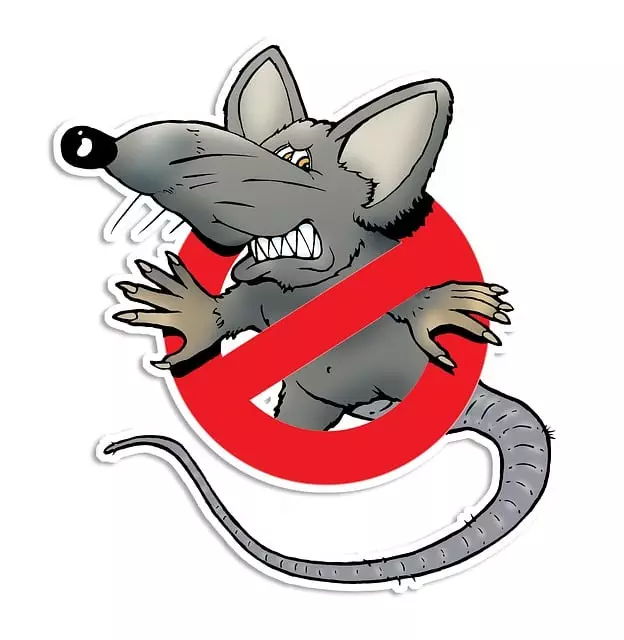Rodent infestations pose significant challenges for homeowners and businesses, with mice and rats being common invaders. These pests cause extensive damage and carry diseases. Professional rodent control services are crucial to mitigate health hazards, property damage, and economic losses. While traditional methods like toxic baits and traps exist, modern, safer approaches like electronic traps and habitat modification offer long-term sustainability. Choosing reputable companies with comprehensive licenses and positive customer reviews ensures effective, humane trapping and tailored treatment options. Preventative measures include sealing entry points, maintaining cleanliness, and removing potential food sources to significantly reduce infestation risk. Case studies demonstrate successful strategies for urban rodent control, emphasizing the importance of local ecology understanding and expert techniques.
Professional rodent control is a vital service, especially with rodents posing significant health risks and causing extensive property damage. This comprehensive guide delves into the world of rodent management, covering everything from understanding different infestation types to exploring modern vs traditional methods.
Learn about the impact of rodents on both health and homes, discover how to choose expert services, and gain practical tips for prevention. Explore real-world case studies, offering valuable insights into effective rodent control strategies. Take control of your space with these essential tools and techniques.
Understanding Rodent Infestations: Common Types and Behaviors

Rodent infestations can be a significant challenge for homeowners and businesses alike, emphasizing the need for effective rodent control methods. Understanding common types of rodents and their behaviors is crucial in addressing these issues. Mice and rats are the most prevalent invaders, known for their adaptability and ability to multiply rapidly. These small mammals often enter buildings through tiny gaps, attracted by food sources and shelter. Once inside, they can cause extensive damage by gnawing on wires, insulation, and structures, posing potential safety hazards.
Different rodent species exhibit distinct behaviors, influencing the approach to control. For instance, mice tend to live in colonies and leave behind distinctive scent trails, making them easier to locate. Rats, however, are more solitary and cautious, often hiding during the day and becoming active at night. Recognizing these patterns is vital for implementing tailored solutions, ensuring efficient rodent control strategies are employed.
The Impact of Rodents on Health and Property

Rodents can have a significant impact on both health and property, making effective rodent control crucial. They are known carriers of various diseases, including salmonella, plague, and lymphocytic choriomeningitis, which can be transmitted to humans through direct contact with contaminated feces, urine, or through consumption of contaminated food or water. Moreover, their presence can lead to structural damage as they gnaw on wires, insulation, and wood, potentially causing fires and electrical shocks.
In terms of property, rodents can also lead to economic losses due to the destruction they cause. They can ruin crops, contaminate food supplies, and increase cleaning costs in commercial spaces. Homeowners may face higher insurance premiums and repair bills as a result of rodent infestations. Therefore, professional rodent control services are essential to prevent these issues and ensure a safe, healthy environment for individuals and businesses alike.
Traditional vs Modern Rodent Control Methods

In the realm of rodent control, traditional methods have long been the go-to solution, involving toxic baits and traps. These methods, while effective, come with drawbacks such as potential harm to non-target species, including pets and wildlife, and the risk of exposure to humans due to poison use. Modern rodent control methods, however, offer a more nuanced and eco-friendly approach.
Innovations in the field include the integration of advanced technology, such as electronic traps, which are safer and more targeted, minimizing environmental impact. Additionally, modern techniques emphasize prevention through habitat modification and exclusion strategies. These approaches not only provide effective rodent control but also promote long-term sustainability by fostering a balance between human activities and natural ecosystems, ultimately ensuring a healthier and safer environment for all.
Choosing the Right Professional Rodent Control Service

When considering professional rodent control, it’s crucial to select a service that is licensed, bonded, and insured for your safety and protection. Reputable companies will employ certified specialists who have the expertise and tools necessary to handle any rodent infestation effectively. Look for businesses with positive customer reviews and a proven track record of success in dealing with various rodent issues.
Additionally, ensure the company offers a comprehensive approach to rodent control, including inspection, prevention strategies, and humane trapping or removal methods. Inquire about their treatment options, such as baiting, sealing entry points, and habitat modification, to ensure they align with your preferences and safety standards. Choosing a professional service that prioritizes both effectiveness and customer satisfaction is key to achieving long-term rodent control success.
Preventative Measures: Securing Your Space Against Rodents

Preventative measures are key in the battle against rodents, and securing your space is the first line of defense. There are several simple yet effective ways to make your property less appealing to rodents. Start by sealing any entry points—cracks, gaps, or holes—using materials like steel wool, caulk, or mesh. Ensure all doors and windows have tight-fitting screens, and regularly check for signs of wear and tear that might provide access. Remove potential food sources by storing groceries in airtight containers, cleaning up crumbs and spills immediately, and disposing of garbage regularly in secure bins with tight-fitting lids. Finally, maintain a clean living space, eliminating clutter that can offer hiding places for rodents. By implementing these preventative measures, you can significantly reduce the risk of an infestation and promote a rodent-free environment.
Case Studies: Successful Rodent Control in Real-World Scenarios

In the realm of professional rodent control, case studies provide invaluable insights into real-world scenarios where effective solutions have been successfully implemented. These stories highlight the diverse challenges faced by pest management professionals and the tailored strategies employed to achieve lasting results. For instance, consider a metropolitan area struggling with a persistent rat infestation in an aging downtown district. The initial step involved a comprehensive inspection to identify points of entry, food sources, and potential harbours. This was followed by a multi-pronged approach: sealing gaps and cracks, setting traps strategically, and implementing a baited feeding program.
The case study demonstrates the importance of understanding local ecologies and adapting methods accordingly. In this particular instance, the team utilized a combination of traditional and innovative techniques. By combining baiting with exclusion methods, they successfully reduced rat populations over several months. This real-world example illustrates how professional rodent control services can transform bustling urban environments into safer, more hygienic spaces, showcasing the tangible benefits of expert intervention in addressing persistent rodent issues.
